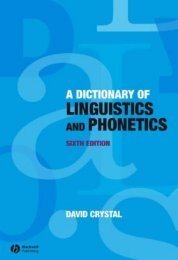url?sa=t&source=web&cd=3&ved=0CC0QFjAC&url=http://www.teachingenglish.org.uk/sites/teacheng/files/B369-Young-Learners-Activity-Book_v10
url?sa=t&source=web&cd=3&ved=0CC0QFjAC&url=http://www.teachingenglish.org.uk/sites/teacheng/files/B369-Young-Learners-Activity-Book_v10
url?sa=t&source=web&cd=3&ved=0CC0QFjAC&url=http://www.teachingenglish.org.uk/sites/teacheng/files/B369-Young-Learners-Activity-Book_v10
You also want an ePaper? Increase the reach of your titles
YUMPU automatically turns print PDFs into web optimized ePapers that Google loves.
TeachingEnglish <strong>Young</strong> <strong>Learners</strong> <strong>Activity</strong> <strong>Book</strong><br />
Activities<br />
Alternatives<br />
• Instead of writing individual stories, the children could work in pairs or small groups.<br />
This would work well if you have large or mixed ability classes.<br />
• The children can be told that they have to include all the sounds in their story.<br />
• The children have to write the story around just one sound.<br />
• The children are given a limit on the number of sounds they can use (three or four for<br />
example) in their story.<br />
• When the children read their stories, classmates can make the sounds at the appropriate<br />
points in the story.<br />
• If you want to extend this activity, the children can be asked to illustrate their stories with<br />
pictures, either with their own drawings or by cutting and pasting pictures from magazines etc.<br />
and the stories can be displayed on the wall.<br />
• Alternatively, the children can collect all their stories in a book and make copies for parents<br />
and other teachers. If appropriate, they can sell the book for a small fee.<br />
No resources?<br />
If you do not have access to audio equipment, you could make the sounds yourself, or put the<br />
children into groups and ask them to think of some sounds they imitate. The other children listen<br />
and guess the sounds.<br />
You can think of sounds that you can imitate, such as the wind blowing, or a door bell ringing.<br />
You could use pictures instead of sounds. The children have to name the objects in the pictures<br />
and then write a story including those objects.<br />
© British Council 2012<br />
69





